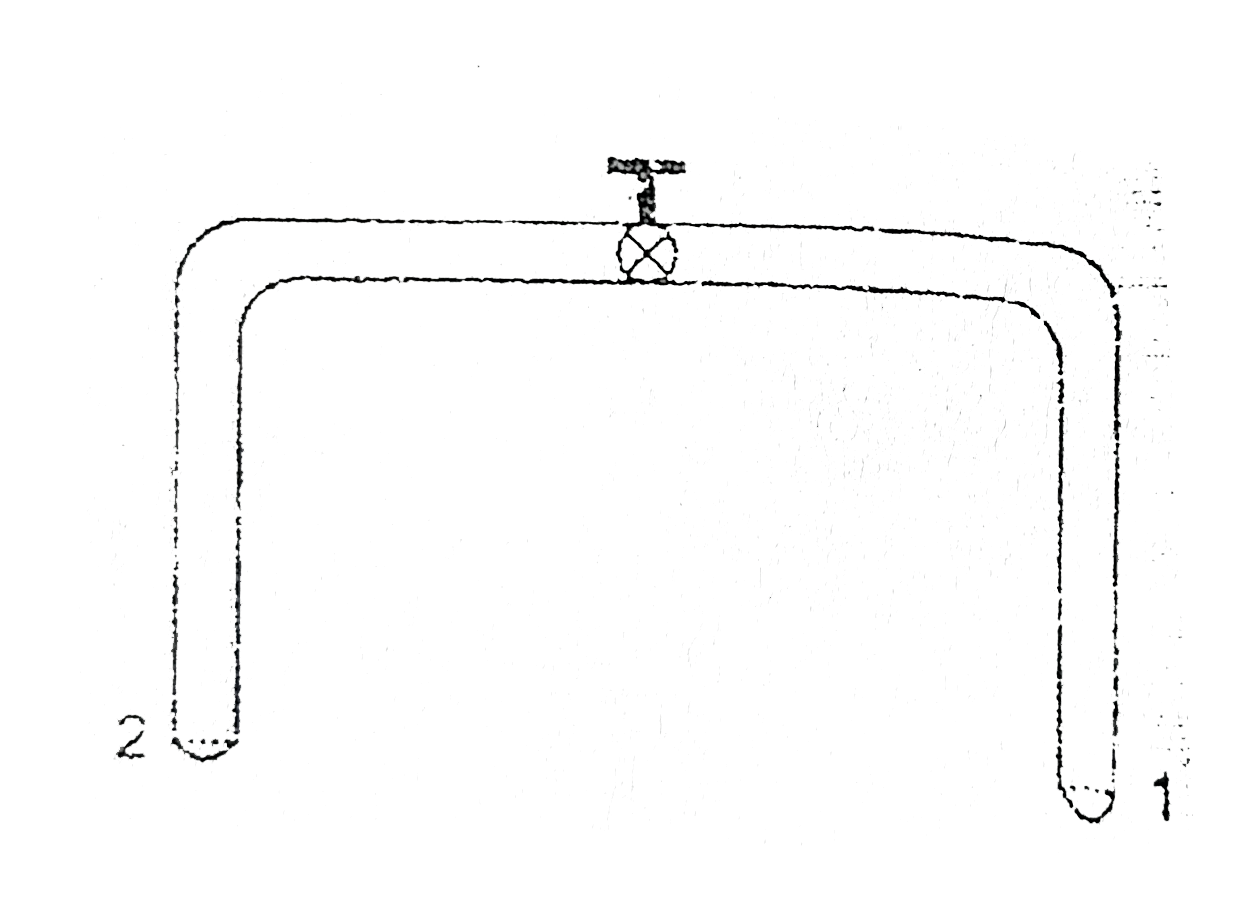A glass tube of uniform internal radius (r) has a valve separating the two identical ends. Initially, the valve is in a tightly closed position. End 1 has a hemispherical soap bubble of radius r. End 2 has sub-hemispherical soap bubble as shown in figure. Just after opening the valve.

Air from end 1 flows towards end 2. No change in the volume of the soap bubbles
Air from end 1 flows towards end 2. Volume of the soap bubble at end 1 decreases
No change occurs
Air from end 2 flows towards end 1. Volume of the soap bubble at end 1 increases
The correct Answer is:B
ΔP∝1r,P1>P2
Similar Questions
Valve is tightly placed in a tube of uniform inner radius (r) of glass. There is a semi-spherical soap bubble of radius r at the head 1. There is a bubble of sub-semicircular soap, as shown in the figure on end 2. Just after the valve is opened
View Solutionकांच की एक नलिका, जिसकी एकसमान आंतरिक त्रिज्या एक किया गया है। शुरू में यह वाल्व कसकर बन्द है। सिरा 1 पर त्रिज्या r का एक अर्धगोलीय साबुन का बुलबुला है सिरा 2 पर एक उप-अर्द्ध गोलीय (sub-hemispherical) साबुन का बुलबुला है (चित्र देखें)। वाल्व को खोलने के तुरंत बाद

View SolutionA glass tube of uniform internal radius (r ) has a valve separating the two identical ends. Initially, the valve is in a tightly closed position. End 1 has a hemispherical soap bubble of radius r. End 2 has sub-hemispherical sop bubble as shown in figure. Just after opening the valve,
View SolutionA glass tuble of uniform internal radius (r) has a valve separating the two indential ends. Intially, the valve is in a tightly closed positioni. End 1 has a hemisphreical soap bubbleof radis r. End 2 has sub hemispherical soap bubble as shown in figure. Just after opening the valve
View SolutionTwo soap bubbles A and B are formed from both ends of a tube. Bubble A is smaller than Bubbles B. The valve and air between the bubbles is free to flow. Then
View SolutionA glass tube of uniform internal radius ( R ) has a valve separating the two identical ends . Initially , the valve is in a tightly closed position . End 1 has hemispherical soap bubble of radius r. End 2 has sub-hemispherical soap bubble as shown in figure. just after opening the valve,
View SolutionA glass tube of uniform internal radius(r) has a valve separating the two identical ends. Intially, the valve is in a tightly closed position. End 1 has a hemispherical soap bubble or radius r. End 2 has sub-hemispherical soap bubble as shown in figure. Just after opening the valve,
View SolutionA soap bubble of radius r is placed on another soap bubble of radius R. What is the redius of the film separating the two bubbles ?
View Solution
